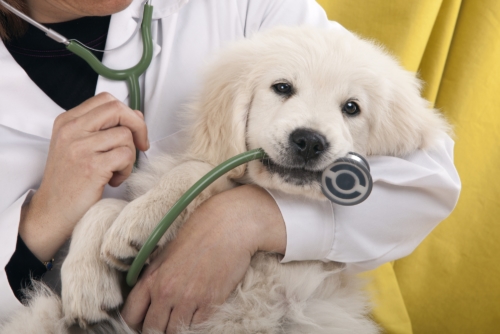My dog’s medical bills are higher than mine

On the surface, it was a good year if you were in the veterinary business. Year-over-year sales grew by 9.1%, while patient visits increased by 3%. For pet owners, however, not so much.
Owners found that the cost of keeping their pets healthy jumped by about 10%. Some of that price increase was due to higher fees, but consumers were also purchasing more products and services.
My chocolate Labrador Retriever, Titus, is now 13 years old. The rule of thumb: every year of a dog’s life equals seven years of my life. That would put Titus’ age at 91, versus my age of 73. I won’t detail all his health ailments, suffice it to say that he is in the vet’s office just about every other week. Those visits last for 30-60 minutes and we usually leave with medications. The cost fluctuates between $175 and $375 per visit (not counting the meds). In contrast, I saw my doctor twice last year and the one medication I take is free.
Just like human medicine, veterinary medicine is experiencing new advances and frequent discoveries. Universities and pharmaceutical companies worldwide are stepping up their research, conducting quality trials, and achieving breakthroughs that are providing an entire range of modern medicines. As such, surgical procedures are now commonplace. Conditions, which in the past would spell end-of-life decisions by owners, are now treatable.
Pet cancer treatments, for example, were practically unheard of twenty years ago. Today, the Veterinary Cancer Society estimates one in four dogs will develop cancer (and almost 50% of dogs over the age of 10). As a result, more and more vets are treating cancer, but at a cost.
Specialist visits to confirm cancer can run upwards of $1,500. Treatments are expensive—chemotherapy ($200-$5,000), radiation ($2,000-$6,000), drugs ($50+ per month). A cancerous pet can set you back $10,000 or more. And unfortunately, more and more pets are showing up with cancer.
To make matters worse, there is no such thing as Medicare for your dog. That means there is no government program to reimburse the veterinarian cancer hospitals, so they pass the full cost on to the pet owner.
What about pet insurance, you may ask? Unfortunately, many new pet owners don’t feel the need to buy insurance for their pet until after it is too late. But even if you have pet insurance, most policies only cover half the cost, and typically pet insurance requires that you pay upfront.
Titus doesn’t have cancer, thank goodness, but he did have a herniated disc where his tail meets his spine a few years back.
That little operation cost $15,000–about the price of a European vacation (which we decided to forgo in favor of the operation). But as Titus ages, his hind quarters are giving out, while the arthritis in his shoulders continues to worsen. As a result, his prescription medicines are crowding out my own in the medicine cabinet and there is no Prescription D plan to take care of the costs. The most we can look forward to is more of the same. Bottom line—we love him—so it’s worth it to us.
But don’t think that your local vet is minting millions from your pet’s misfortunes. If all they cared about was money, they would have entered another field like dentistry or human medicine. There aren’t that many vet schools in the U.S. and all of them are highly competitive. The cost and duration of the education is similar to the cost of human medical school. But the average salary of veterinarians is less than half of what medical doctors pull in. New vets have low starting salaries and high student debt payments as well.
Supplies, equipment, and facility costs are equivalent to human medicine expenses. Staffing costs are lower, but a highly skilled and well-trained staff still costs money, especially in an environment of labor shortages and high turnover. In addition, the stress and pressure caused by the pandemic has taken its toll on vets. Omicron just increases those challenges. In the meantime, the increase in demand for veterinary care has exploded.
All in all, be grateful that you have a vet to go to when needed. Expect your vet bills to continue to increase. The best thing you can do is begin to practice preventive care. Regular vet care is important, even when nothing is going on. Vaccines, spaying and neutering, dental cleanings, flea and heartworm prevention, bloodwork and yearly exams are critical to keeping the big bills in check.







